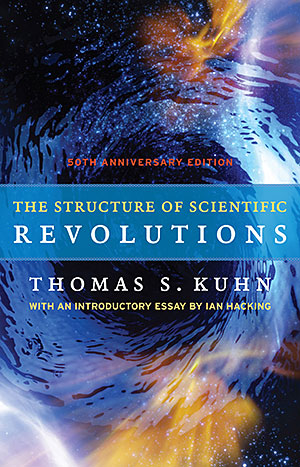A study of Kuhnian philosophy brings lessons on management style

Roula Khalaf, Editor of the FT, selects her favourite stories in this weekly newsletter.
I was introduced to the work of the late Thomas Kuhn as a PhD student studying economics and economic history at the University of Melbourne. Kuhn, a philosopher of science, was a powerful advocate of the importance of understanding the history of science. He is famous for his masterwork, The Structure of Scientific Revolutions (1962). As the title suggests, his particular interest was in scientific revolutions, such as the transition from Ptolemaic to Copernican astronomy, from Newtonian to Einsteinian physics and the Darwinian revolution in biology.
Reading Kuhn I realised his relevance to my dissertation. I had chosen to write about the Australian Treasury in the period from the second world war to the 1980s — a period during which its status as the premier source of economic policy was rarely questioned.
Kuhn shifted my focus from analysing the Treasury’s economic policy advice to examining the institution’s world view — its set of core beliefs that led it to make the recommendations it did. I argued that over time a shift occurred in the Treasury’s world view from a Keynesian to a neoclassical one, which in turn was reflected in a shift in the kinds of policies it proposed. In Kuhnian terms, the changing nature of the Treasury’s economic policy advice reflected a move from one paradigm to another.
Scientific revolutions of the kind that Kuhn was analysing occur infrequently. Kuhn used the term “normal science” to refer to the way science is conducted day to day between revolutions. The defining characteristic of normal science is the dominance of a paradigm — the collection of beliefs, values, assumptions that are shared and accepted unquestioningly by the scientific community. The paradigm determines how research should proceed, the key problems to be solved and the method for solving them.
Normal science endures for long periods. Preceding the eventual emergence of scientific revolutions is an accumulation of “anomalies” — nagging puzzles that seem to contradict the paradigm’s theoretical assumptions. The emergence of mismatches are initially dismissed. Puzzles that cannot be readily explained or results that seem at odds with the paradigm are not seen as challenging the paradigm but the result of faulty technique by the scientist. But as the number of anomalies increase, a sense of crisis escalates, various alternative paradigms begin to be proposed and eventually scientists settle on a new paradigm.

Kuhn was criticised for suggesting that the shift from one paradigm to another can involve a kind of “conversion experience” and for questioning the notion that sciences march in a linear fashion to the truth. His critics also noted that his model applied well to some scientific revolutions but not to all. Nevertheless, his work has had a monumental influence, not only on how the natural sciences are viewed but also in the way some of the major shifts in the social sciences, including economics, are interpreted.
For me, Kuhn provides broad and enduring lessons. We need to be alert to the things we take for granted, the norms we never question, the assumptions that remain below the surface, the mindset that we apply unquestioningly when making decisions, interpreting evidence and analysing trends. As a manager, can you articulate the paradigm to which you are subscribing? Are you too readily dismissing apparent aberrations as mere outliers? Do you subscribe too willingly to the notion of business as usual?

Cranfield School of Management visiting professor JC Spender’s notion of “industry recipes”, the beliefs held industry-wide by senior managers about the nature and structure of their industry and the fundamental determinants of success, are analogous to Kuhn’s concept of paradigms. Industry recipes are a kind of normal science and with them comes the possibility of blind spots that may cripple an individual firm or even the entire industry’s ability to deal effectively with external change.
Consider two historical examples. Ford, General Motors and Chrysler were dismissive of Japanese cars in the 1960s and could not imagine a world in which small cars could be profitable or attractive to American consumers. Before the invention of the Barbie doll in the 1950s, the toy industry took for granted that a doll had to be a baby.
Today, Kuhn seems more relevant than ever: the emergence of “Industry 4.0” or “the fourth industrial revolution”, with the rise of automation and data exchange in manufacturing, has produced a mountain of Kuhnian anomalies and a sense of crisis about the relevance of traditional management theories.
What will be the new management paradigm in a world characterised by collaborative and sharing communities and in which digital disruption is the norm?
Professor Gregory Whitwell is dean of the University of Sydney Business School
Comments